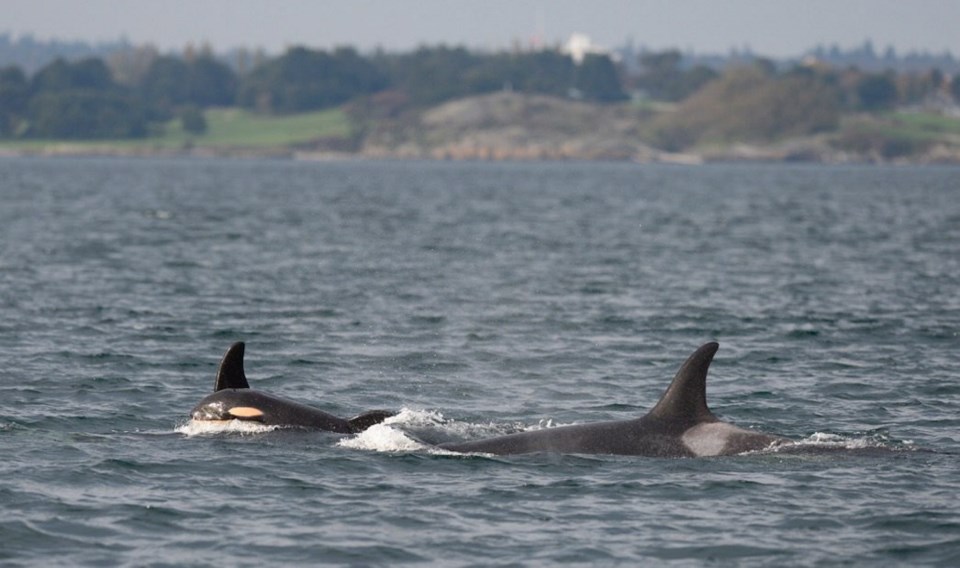An orca baby boom continues in local waters with another young whale being spotted Saturday in Haro Strait, between Vancouver Island and San Juan Island.
That brings to six the number of baby orcas born to the southern resident orca population, made up of J, K and L pods, since late-December 2014.
“Now we’re a Brady Bunch,” quipped Michael Harris, executive director of the Pacific Whale Watch Association, referring to the ’60s and ’70s sitcom about a blended family of six children. The new arrivals have come to be referred to as the “Class of 2015.”
It is likely that the latest calf was born within the past few days, said Harris, whose group represents 36 whale-watching operators in B.C. and Washington state. As small it looks beside adult orcas, the newborn could weigh about 400 pounds and measure seven feet long, Harris said.
The mortality rate for orca calves is about 50 per cent in the first year, but the Class of 2015 has been faring well so far. The new baby is a member of J-pod and was born to an unusually old female — a 38-year-old grandmother named Princess Angeline.
Harris said the current baby boom has seen three of the oldest southern resident mothers on record — with a 43-year-old setting the benchmark — and one of the youngest, a 10-year-old. Reproduction doesn’t usually start until age 13 or 14.
Southern residents are listed as endangered, and the young orcas have been a real boost, Harris said. The jump in births follows two years with no surviving orca calves and has produced the best numbers since 1977, when there were nine births.
“We’re on the uptick,” he said.
Harris said there is a simple explanation for the way things are going.
“Salmon, salmon, salmon, salmon,” he said. “Somebody said ‘Wow, a lot of babies, must have been something in the water.’ I said ‘Yah, salmon.’ ”
But there could be tougher times ahead for salmon runs, Harris said.
“We’re coming off a drought. We coming off a giant algae bloom off the coast,” he said. “We’re dealing with these crazy ocean conditions and increased pressures on land, so we’re going to have a very challenging salmon year next year.
“We are in no way out of the woods with this population. We’ve got a of work to do.”



